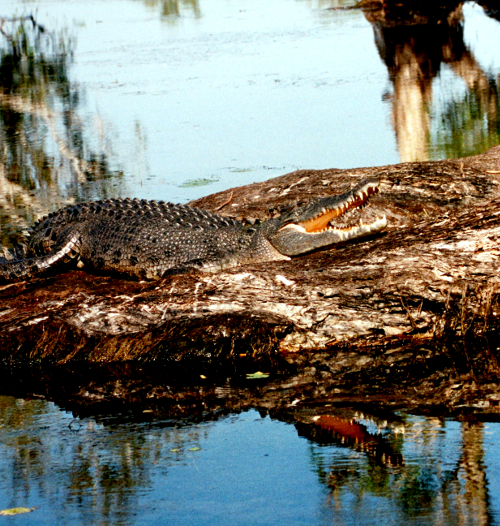Funds to fix four points in Kakadu
 Some more money has been provided to fund changes to the way Kakadu National Park is managed.
Some more money has been provided to fund changes to the way Kakadu National Park is managed.
Kakadu – one of Australia’s best-known national parks – is in trouble, put at risk by direct threats such as feral cats, pigs, buffalo, weeds and bushfire.
As thousands gather in Sydney ahead of the World Parks Congress, Parliamentary Secretary for the Environment, Senator Simon Birmingham released Kakadu’s Threatened Species Strategy - a major change in Kakadu’s approach to threatened species.
“The strategy was developed primarily by leading wildlife expert Professor John Woinarski, through the Northern Australia Hub of the Australian Government’s National Environmental Research Program,” Senator Birmingham said.
Work to implement the strategy will start immediately, through a $750,000 investment coordinated by Threatened Species Commissioner Gregory Andrews.
This is in addition to the work funded by Kakadu’s regular $17 million annual budget.
The $750,000 will deliver four priority projects, in partnership with Indigenous ranger groups where possible:
- Project 1 - Intensive work to target threats from fire, weeds and feral animals in crucial habitat, extending from the Stone Country to the lowland woodlands.
- Project 2 - Creating a wildlife refuge on Gardangarl (Field Island) for species struggling on the mainland including small mammals and goannas.
- Project 3 - Expanding of the ‘toad smart’ quolls project, building on the highly successful research conducted in Kakadu since 2010.
- Project 4 – Seed-banking and propagating threatened plant species, many of which occur nowhere else in the world.
“This Kakadu rescue plan, and the strategy that underpins it, are an impressive package of work from one of Australia’s top scientists, Professor John Woinarski. This plan is built on more than a year of consultation with traditional owners, leading researchers and park staff,” Senator Birmingham said.
“This strategy nails the causes of Kakadu’s biodiversity decline with a fearsome mix of feral cats, other invasive species and inappropriate fire practices. It sets the road map for effective action.
“The strategy runs for 10 years, and it will need a mix of urgent and sustained effort.
“The problems in Kakadu have developed over many years, so turning things around is going to take time,” he said.
Chair of the Kakadu Board, Maria Lee, said it was important for traditional owners and the Kakadu Board of Management to work with Parks Australia to look after country.
“We have been worried about some of the plants and animals for a long time as their numbers seem to be getting less and less. We think that this strategy is a good thing and we ask the government to help us put it in place,” Ms Lee said.
A decade ago, Threatened Species Commissioner Gregory Andrews was living and working in the park with traditional owners. He returned recently and was struck by the changes. Fires have been too frequent and too fierce, and there are noticeable changes in the number and types of animals.
“Inappropriate fire is a major concern for our threatened plants and animals,” Mr Andrews said.
“Some plants need decades to mature, meaning inappropriate fire can wipe them out. We also know that inappropriate fire makes feral cats even more effective hunters and takes away the hiding places for our threatened reptiles, birds and small mammals.
“As Threatened Species Commissioner, my role is to marshal expertise and deploy resources where they are most needed, and without a doubt Kakadu is high on that list.
“I’ve seen Kakadu elders moved to tears at the loss of bandicoots, quolls and wallabies from their lands. For them, and for all Australians, it’s time to ramp up our efforts to save this special place,” he said.








 Print
Print